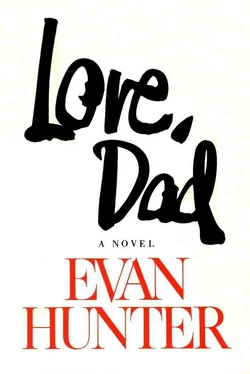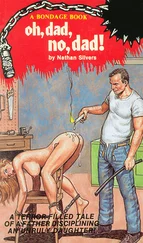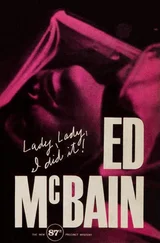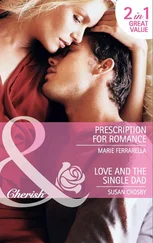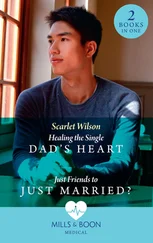“No, no, it is quite all right,” Goedkoop said, and hung up abruptly, the way Jamie had discovered most foreigners did, without the conversational pas de deux Americans used as a terminating shorthand.
Goedkoop did in fact fastidiously explore what he referred to, in his call to Jamie two days later, as “the darkness of Amsterdam,” inquiring after the tall blond girl with blue eyes, phoning all the hotels, visiting in person the myriad rooming houses and the several youth hostels, spending a considerable amount of time at Delaurier, the largest of the hostels which — appropriately enough, he felt — had recently opened an annex as a rehabilitation center for drug addicts, and then taking to the streets themselves, roaming through the parks and along the canals during the daytime hours and frequenting at night those dimly lighted boîtes off the Rembrandtsplein, wandering into the Seaman’s Quarter, searching through the sleazy bars on the Oude Zijds Voorburgwal and around the Oudekerksplein where prostitutes beckoned from cribs over which red lights actually were hanging. He even walked onto the Oude Zijds Achterburgwal, knowing this was dangerous, and hoping against hope he would not find James Croft’s daughter here.
He found no trace of her anywhere, but he assured Jamie on the telephone that he would try yet another time when the photograph of her was in hand. He told Jamie, again, that he was not to worry; he was certain “young Matilda” (his faulty memory of the name caused Jamie a sudden lurch of despair) would be writing or calling home sooner than he expected. “In the meanwhile,” he had also talked to Lewis about those pictures in Time, and had learned that only North American rights had been purchased, and that he was free to sell the photographs elsewhere. Lewis was sending him prints forthwith. Again, he hung up abruptly.
Jamie had no way of knowing that Lissie had left Amsterdam on the very day Evert Goedkoop had begun his fruitless search.
Robby’s Dutch girlfriends were twenty-two-year-old twins named Elisabeth and Ida Verschoor, who made their home in an apartment off Jan Eversten Straat, within walking distance of Erasmus Park. Both girls spoke fluent English and were, in fact, employed as translators at the American Consulate near the Concertgebouw, to which they took the tram each morning, leaving their guests to enjoy the exuberant hospitality of the city before rejoining them at the apartment along about six each evening.
There were three bedrooms in the apartment. Barbara shared one of them with Robby the very first night they were there. The blond twins, pretty and rather tall by Dutch standards, slept in their own bedroom, side by side in a king-sized bed. Tony Giglio and Paul Gillis slept in the third bedroom at the end of the hall. Lissie slept on a couch in the small but neatly furnished living room; a tiled clock on the mantelpiece chimed the hour and the half-hour, keeping her awake half the night.
The Amsterdam equivalent of the statue of Eros in London was the white stone memorial on the east side of Dam Square, across from the Grand Hotel Krasnapolsky with its orange awnings and fluttering rooftop flags. There, close by a smaller but much fiercer lion than the ones guarding Trafalgar Square, the hippies gathered on the cobblestoned curbs circling the memorial. But here, perhaps because the girls had never before been a part of such a concentrated congregation of similarly minded young people (except, as Lissie recalled and pointed out to Barbara, at Woodstock last year), the girls found themselves more attracted to what they called “the heavy culture” the city had to offer, which many young people like themselves were actively seeking out. The Anne Frank House was especially appealing to many of the visiting American youths, who wrongheadedly equated the young Dutch girl’s ordeal during the German occupation with the totally incomparable “hassling” they suffered at the hands of law enforcement officials everywhere, the Dutch cops forming a part of the international brotherhood where it came to loitering or disorderly conduct, but remarkably benign where it concerned the free and easy transfer and open use of drugs of every stripe and color.
In Amsterdam that spring, the visiting kids were of the general opinion that the grass here in Europe was greener than it had been back in the States. Most of the marijuana that found its way into the American market came from Mexico; the stuff in Amsterdam came from Asia, Africa or the Near East, and was stronger than what the Americans were used to smoking. There was a great deal of hashish in Amsterdam. The kids called it hash as though it were as innocuous as a dish of chopped meat and potatoes served over the counter of a greasy spoon restaurant.
And perhaps it was. Marijuana or its various derivatives was the least concern of anyone in Amsterdam. The kids, repeatedly warned by every rock-and-roll disk jockey in the States that “Speed Kills,” further warned by insistent wall posters wherever young people gathered, nonetheless seemed to be turning to amphetamines with an avidity that was bewildering and frightening to Lissie. Even Barbara, slightly older and presumably more sophisticated, found sickening the druggies draped around the Dam Memorial.
The streets were littered with dog shit and broken glass, two rather unrelated commodities, but they were also strewn with human debris, the instantly recognizable speed freaks who jabbered like monkeys, their bodies running on a hyperactive double-time, their pupils dilated, their sweat soaking through T-shirts or tent dresses. Pale, invariably thin to the point of emaciation, they raved like lunatics when they were high, and then became enormously depressed when they crashed. A confirmed speed freak could get off for hours on a single shot of Dexedrine or Methedrine, mainlined by syringe, like heroin, which was also prevalent and easily obtainable in Amsterdam that spring. Even before the twins suggested that they might enjoy going to Elysium that night, a place they described as “Woodstock playing in Amsterdam,” even before Lissie caught the scene there, she had firmly decided that the one thing she would never in her life do was poke a needle into her body.
Elysium was perhaps as large as the Fillmore East in New York, but unlike its American rock counterpart, there was no extravagant psychedelic light-show accompanying the music here. Instead, the cavernous two-storied hall was dimly lighted and dingy, thronged — when they entered it at midnight — with what Lissie estimated to be 5,000 kids between the ages of thirteen and twenty-five, all of them stoned. There was no furniture in the place, not a chair, a table or a bench anywhere in sight. The kids milled about the big stage at the front of the hall, or sat on the floor below it, listening to a badly amplified, four-piece rock group that billed itself, in American fashion, as The Rocketeers, singing American tunes in a European accent of uncertain origin, the words “Plizz riliss me... lat me go” blaring from the speakers as the twins-guided party paid their admission fees and pushed their way through into what Lissie immediately equated with a Chinese opium den.
Marijuana smoke hung thickly on the air, its sweet aroma almost sickening in such concentration. (“Just take a deep breath,” Barbara said, “and you’re high.”) To the right of the entrance door, a young blonde wearing a miniskirt with nothing under it, her eyes glazed, her jaw hanging lax, was sitting on the floor in a noxiously fluid pile of her own excrement. Lissie hurried past her, frightened, taking Tony’s arm in reflexive defense, watching as Paul Gillis glanced at the girl and turned away. He had said nothing when the twins suggested Elysium; he said nothing now.
Читать дальше
